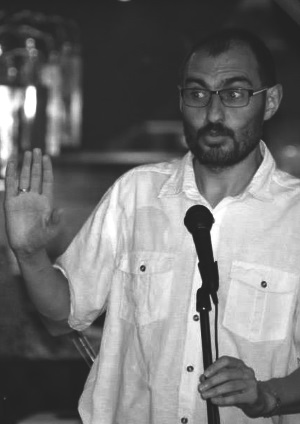Trilogy
"In Search of the oasis", "The yellow line" and "Eneadrama" form a trilogy. I know that everyone will not agree with this statement. But I venture to defend it with some vehemence. What argument or characters join the three stories? How to defend such lack of common sense?
The main character of the three stories is an abstract but deeply living entity. In the auteur filmmaking, is the author who signs his story, but not only for what Truffaut said, but also because the author himself is the protagonist ... Desires, fears, perversions, the contradictions of existence ... These three films have the common argument of the therapeutic, the cathartic, the absolute necessity to leave behind some ghosts to face and overcome harmonious and peaceful avatars of the life.
"In Search of the oasis" tells the story of Robert, a man of 35 who lives alone and isolated from the world in his small flat in Barcelona. It is her sister in law who is in charge of buying everything he needs to survive. Each week, as if it were a ritual, she lefts the goods at the door. With her lives Juliana , the twelve years old daughter of Roberto, who is unable to raise her ... However, one day, as his sister in law has to move fo employment reasons, the protagonist faces a difficult crossroad. A surprise visit will help Roberto in his desire to "normalize" his life and take responsibility for Juliana.
"The yellow line" is a thesis on masochism, using the excuse that the main character offers. Santiago is a man without own life of around forty working as a waiter on the orders of his master ex-husband. He is not able to assimilate the new situation and concocts a plan to get revenge: blackmails his ex-wife with some erotic videos in order to eliminate Santiago and get ride of not just a love rival but also a worker he hates.
"Eneadrama" is inspired by the Enneagram personality map prepared by Claudio Naranjo during the last 42 years. Describes nine stories, each starring a representative of each point of the map. Each of the short stories is based on the drama of each of the neurosis but without relying on clinical issues or theoretical, only through dramatic action and characters. The film begins with a prologue and ends with an epilogue, through them we can better understand what is the path to happiness.

